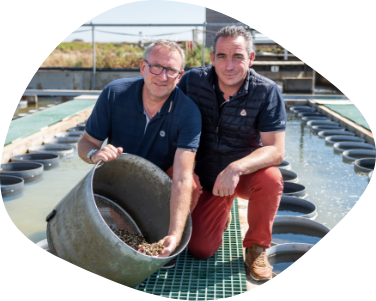
Our know-how – your best means of expression
Innovating for and at the service of shellfish farming
Established since it was founded on the island of Noirmoutier, Marinove is a player in the local economy which promotes French and Vendée know-how in the selection of shellfish worldwide. This role as first link gives us the responsibility to succeed for the success of our clients, to innovate, to advise and to assist professionals in their breeding. We place our clients and nursery partners at the heart of each of our considerations.

A Beaulieu Family business
Marinove was founded in 2006 from the passion of a big name in fishing and fish trading, who wanted to put their know-how as a fish hatcher at the service of shellfish farming, an emblematic profession of their native island. The 2016 meeting with the Beaulieu Family, shellfish farmers for 4 generations – and the shared path that followed – continued to strengthen the DNA of the first link in the service of shellfish farming professionals of Marinove. We wish to be a player in the daily lives of producers, listening to them, helping them to obtain qualitative and quantitative results that meet their requirements.

